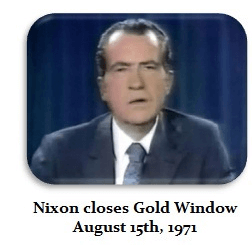Afghanistan has fallen. The U.S. government’s nearly two-decade-long, multi-trillion-dollar “nation building” effort in the troubled, tribal country may now have nothing to show for itself.
“President Joe Biden and other top U.S. officials have been stunned by the pace of the Taliban’s nearly complete takeover of Afghanistan,” reports the Associated Press.
Unsurprisingly, they didn’t see it coming. Central planners almost never do.
They imagine their carefully constructed expert models backed by reams of data points and implemented with overwhelmingly superior resources will ensure victory. But to paraphrase the late former Secretary of Defense Donald Rumsfeld, there are “unknown unknowns” that make forecasting future events impossible.
When it comes to the economy and anticipating downturns and crashes, central planners also have a horrible track record.
The Federal Reserve’s outlook always assumes steady growth. Then when officials are caught off guard by adverse events, they rush in after the fact with stimulus.
As markets price in expectations of being bailed out by the Fed, valuations grow richer. Capital gets reallocated to Wall Street and big banks – and away from segments of the economy that have no direct Fed backstopping.

The financialization of the economy via the open-ended proliferation of irredeemable currency has been an experiment five decades in the making.
Sunday marked the 50th anniversary of President Richard Nixon’s order revoking the U.S. dollar’s redeemability in gold.
That default marked the end of the post-World War II Bretton Woods system that had made the U.S. dollar the world’s reserve currency. It ushered in the beginning of an entirely new currency regime.
Although there has been political continuity linking the original Constitutional dollar to the current one, they really aren’t the same currencies either in character or in purchasing power.
There have been multiple devaluations and de-linkages from gold and silver along the way. And since 1971, the U.S. “dollar” has become entirely a fiat currency – redeemable in nothing and backed by nothing but faith.
A new currency regime will eventually emerge. Whether it’s a digital dollar, a global currency, or something else – perhaps even a market-based currency order that incorporates precious metals – remains to be seen.
Whether the current currency regime collapses suddenly like the puppet government in Afghanistan or gets gradually phased out is also difficult to predict. Too many unknown unknowns.
What is knowable is that the post-1971 U.S. “dollar” is destined to continue losing value. And that means gold stands to rise when measured in unbacked Federal Reserve Notes.
Five decades ago, gold prices traded in the low $40s per ounce – if you can believe it. Since then, gold has run up to a high of over $2,000.
That’s simply a reflection of the loss of the dollar’s purchasing power… a devaluation of 98% when measured against the constant of gold bullion.
The Fed’s own stated goal is for the currency to lose at least 2% of its value every single year to inflation. The latest consumer price and producer price data show it running at more than double that rate right now.
Fed officials could turn out to be wrong about their “transitory” inflation outlook, like they have been about so many other things.
Or they could be straight-up lying about their actual inflation intentions to try to prevent a panic out of Treasury bonds and a corresponding rush into hard assets.
The truth about inflation will ultimately be revealed not by officials or experts, but by real-world, on-the-ground prices.



